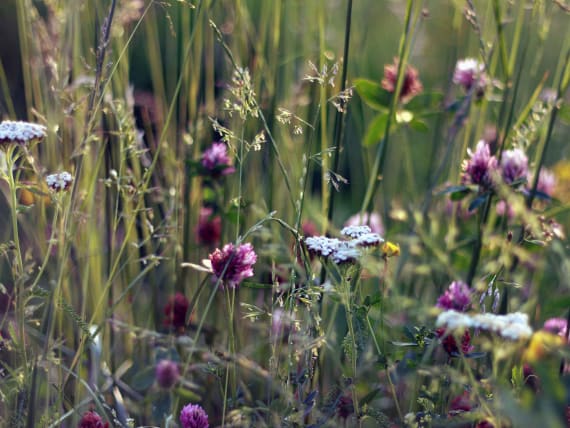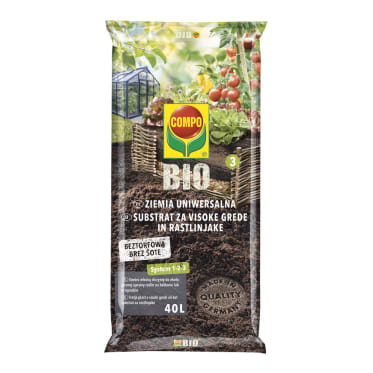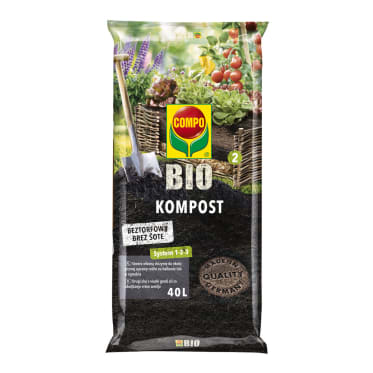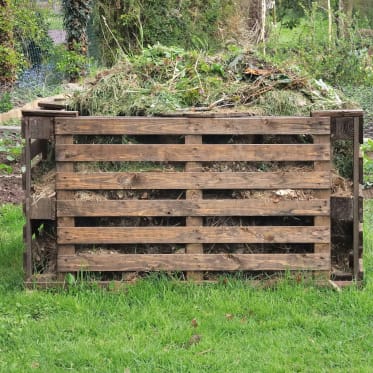Frequent search terms

- COMPO
- Guide
- Plant Care
- Basics
- Organic gardening
- Eco-friendly gardening
A plea for more awareness when gardening:
How green are our fingers really?
It's quite paradoxical! We love nature and we love our garden. By planting new life, we make a strong contribution to protecting the environment. Yet from time to time we still harm it with our gardening work – and are usually completely unaware of this. We garden to the best of our knowledge and belief based on habit and our own sense of what looks good. But of course, potential ecological consequences are not something we always consider. If we really want to have a positive impact on the environment and climate, we cannot get around questioning what we're doing. Greater awareness is the first step toward identifying our own environmental transgressions in the garden. After all, we will only be able to change our behaviour accordingly if we think about our actions. It is with that in mind that this article aims to encourage us to be more aware. And to identify potential areas where a change in approach is worthwhile.

Give Mother Earth what she needs: Appreciation
The demand for resources has long since been greater than the amount Earth can actually renew. Therefore, an appreciation of our natural resources is the most important principle for anyone who wants to make their everyday life greener. With every action we take, we should be aware of the extent to which resources are being consumed and whether there are more efficient alternatives. And there are many different ways for us to ask this question when we are gardening: Where do I get my plants from? What equipment and products do I use for their care? How much water do I need for them? The options for conserving our resources when gardening are almost infinite. Of course, exactly how far we want to go is entirely up to us. To elaborate on the last example, a rain barrel for collecting water for plants is great but we can go a step further by buying plants that need less water from the outset.
Step by step toward a better ecological balance
Gardening like they did in the good ol' days
How to

It's paradoxical that the plants in our garden convert CO2 into oxygen yet when we care for those plants we often rely on electrical equipment, which has precisely the opposite effect. As crucial as technical progress is, it also encourages us to take the easy way out. Of course, electric lawnmowers, hedge trimmers, leaf blowers, etc. provide a valuable service. But it's also a fact that if we rely on muscle power for such activities, we are not only doing something for the environment but also for our bodies. And for neighbourly relations – after all, garden equipment can often be quite loud. On the topic of neighbours, buying jointly and sharing larger items of equipment might be worth considering – saves money, saves space and conserves resources!
Artificial materials?
An absolute no-no!

Whether it's a planter, a piece of furniture or a watering can, plastic objects certainly lend themselves to outdoor use. But both the production using crude oil and a decomposition process that takes several centuries should convince the green soul of every gardener that this material has no place in the garden. And if plastic is an absolute must, then what about an alternative made of recycled material? Another option is to help old objects enjoy a second life in a new role with upcycling. For example, tin cans make great planters or wood that is no longer needed can be used for making a garden bench.
Keep an eye on the plants you buy
The right choice

Yes! Foreign plants look great and turn every garden into an exotic oasis. But let's be honest, don't perennials and shrubs from our part of the world cut an equally good figure? The disadvantages of imported or bred beauties are enormous. They usually have a long transport route behind them, are more susceptible to diseases and offer little food for insects or other animals. Incidentally, not buying any plants at all would be even better! And how is a bare garden supposed to become a colourful flower paradise? Plant propagation is the answer! Various ways of multiplying your green treasures are available to you. Neighbours will certainly be pleased to receive a green gift from your garden. And who knows? Perhaps they will return the favour with the cutting of a plant that you've had your eye on for a long time... Or you could even organise a plant-sharing party for neighbours, family and friends.
Welcoming guests
Protecting beneficial insects

More and more animals have difficulty finding food and shelter. To provide them with a habitat and promote biodiversity, we should look carefully when buying plants and give preference to native single-flower varieties, as they are the only ones that will provide such animals with the food they need to survive. In principle, birds, small creatures and other beneficial insects feel especially at home in wild gardens, where natural confusion reigns rather than tidy solitude. And ideally the garden should be planned so that it blooms all year round. This is something both us and insects benefit from.

More life in the garden
Many of us like a tidy garden. Neatly raked beds, meticulously trimmed lawns and a hedge cut with precision are the dream of equally exacting hobby gardeners. Admittedly, beauty may be in the eye of the beholder but we are doing little to protect the environment and biodiversity. Planting colourful variety and often leaving it as it is should be the maxim so as to ensure even greener gardening prevails. Bare surfaces on the ground can also lead to dehydration or erosion of the valuable soil. Accordingly, it is advisable to plant ground cover or spread mulch. This is because a protective layer of mixed lawn cuttings, foliage or harvest residues reduces evaporation, promotes humification and makes it more difficult for weeds to spread. Although in most wild gardens only herbs – and no weeds – appear in any case. At which point we return to awareness and appreciation of our resources.
COMPO BIO
Organic gardening
Discover more exciting topics













